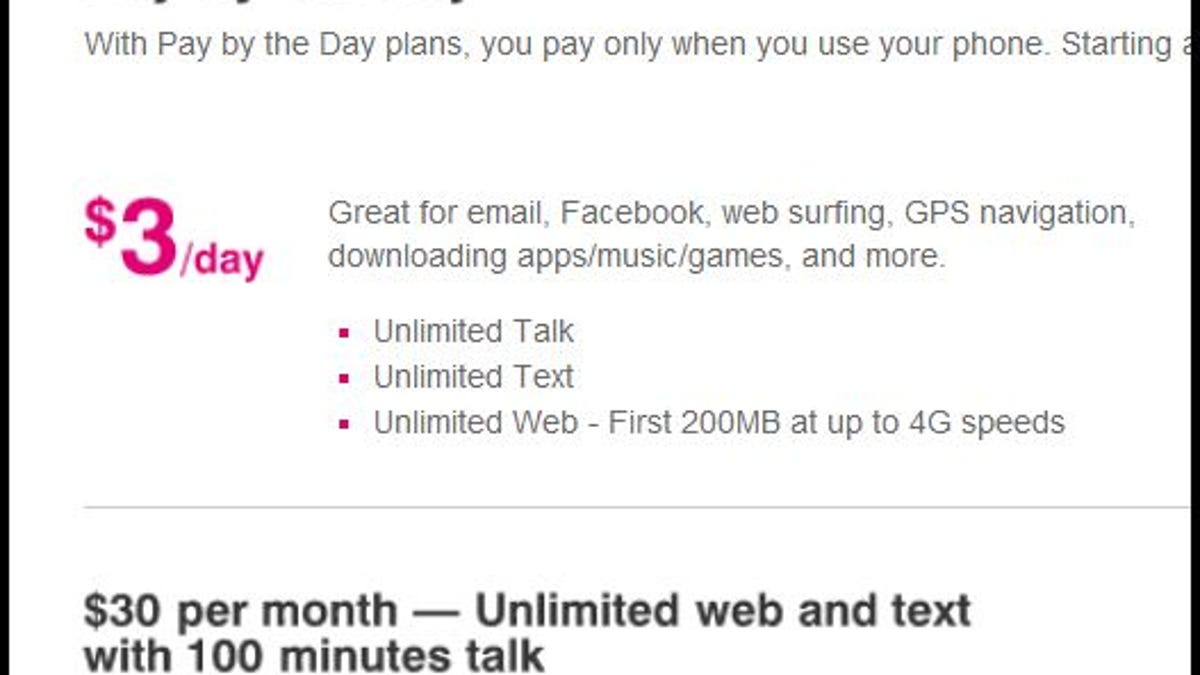My move to T-Mobile's $30 unlimited plan: The good and the bad
I switched my daughter's iPhone 4 to T-Mobile's surprisingly affordable prepaid plan. Was it the right move?
I don't mind my 13-year-old daughter using an unlocked, hand-me-down iPhone 4. It's actually an ideal phone for her, as it lets her text and app to her heart's content while allowing me to keep tabs on her whereabouts and app-tivities (she's on the same iTunes account as me).
But I loathe the extra $60 or so the phone adds to my monthly AT&T bill. She subsidizes it, yes, but mostly with an allowance that comes from yours truly.
So it was with great interest that I read Danny Sullivan's recent post, "Is this the best smartphone plan ever?" I'd considered switching the kid to a less expensive service like Solavei or Straight Talk, but I had a few reservations about both. And the savings were good, but not spectacular: around $11 and $15 per month, respectively.
But T-Mobile's prepaid plan would literally cut her phone-service cost in half. For a very reasonable $30 per month, she'd get 100 voice minutes and unlimited (with an asterisk, of course) texting and data. For my daughter, that's perfect: She probably spends all of 10 minutes actually talking on the phone, but she's heavy into messaging, Pandora streaming, and the like.
Because the iPhone was already unlocked, all I had to do was order a SIM card ($10 plus tax), then pop it in and activate it. In theory. In reality, I received only a laughably sparse confirmation e-mail for my order (it literally contained only an order number, date, and dollar amount.). And later, during activation, the account setup page wouldn't let me submit my payment information. I'm not sure if it was a Chrome browser incompatibility or what, but ultimately I had to get on the phone with T-Mobile to resolve the issue.
With that step done, it took less than 24 hours to get her number transferred over, and from there it was mostly smooth sailing. Calls worked, visual voice mail worked, and MMS worked (or, at least, photos delivered via iMessage). For my daughter, the switch was largely transparent.
However, here's the rub: T-Mobile's data service in our metro-Detroit neck of the woods is limited to 2G. That's because of the iPhone's use of the 1,900MHz band, which T-Mobile has yet to fully refarm to 3G/4G (something the company's coverage map woefully fails to address). It's available in Detroit proper, Ann Arbor, and a couple of other Michigan cities, but out here in the 'burbs, it's mostly 2G.
The good news is that where my daughter is concerned, it doesn't really matter. Calls and text messages go through just fine, and although she does occasionally get frustrated by slow Web searches, she's usually connected to Wi-Fi anyway. And, hey, for the price, I'm not expecting 4G LTE.
Quite the opposite: this $30-per-month plan is great for a teenager or anyone else who relies mostly on data and doesn't need many minutes. The other carriers would be wise to offer similar options for the modern smartphone user.


